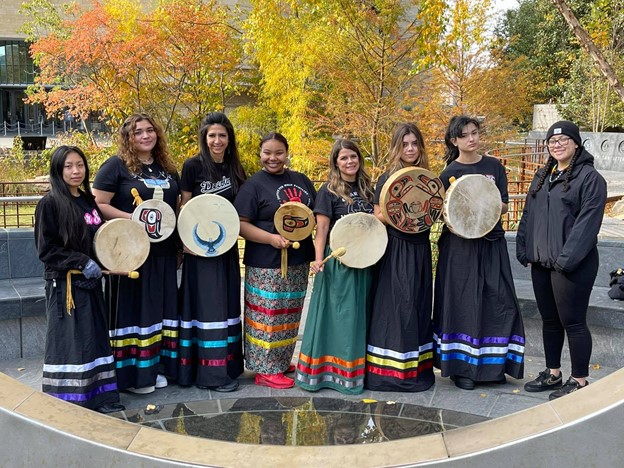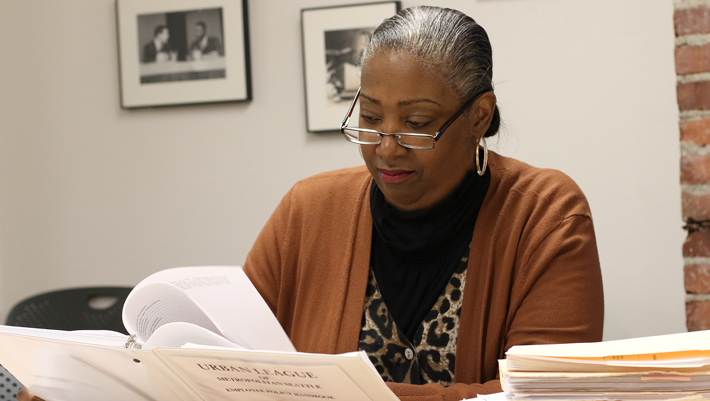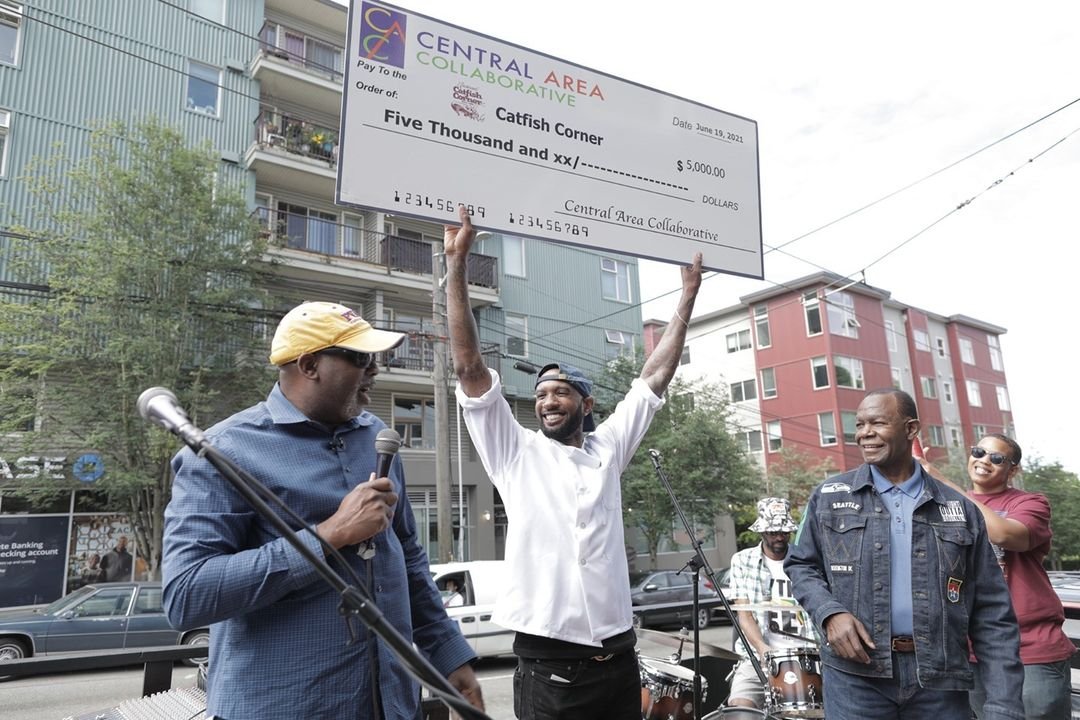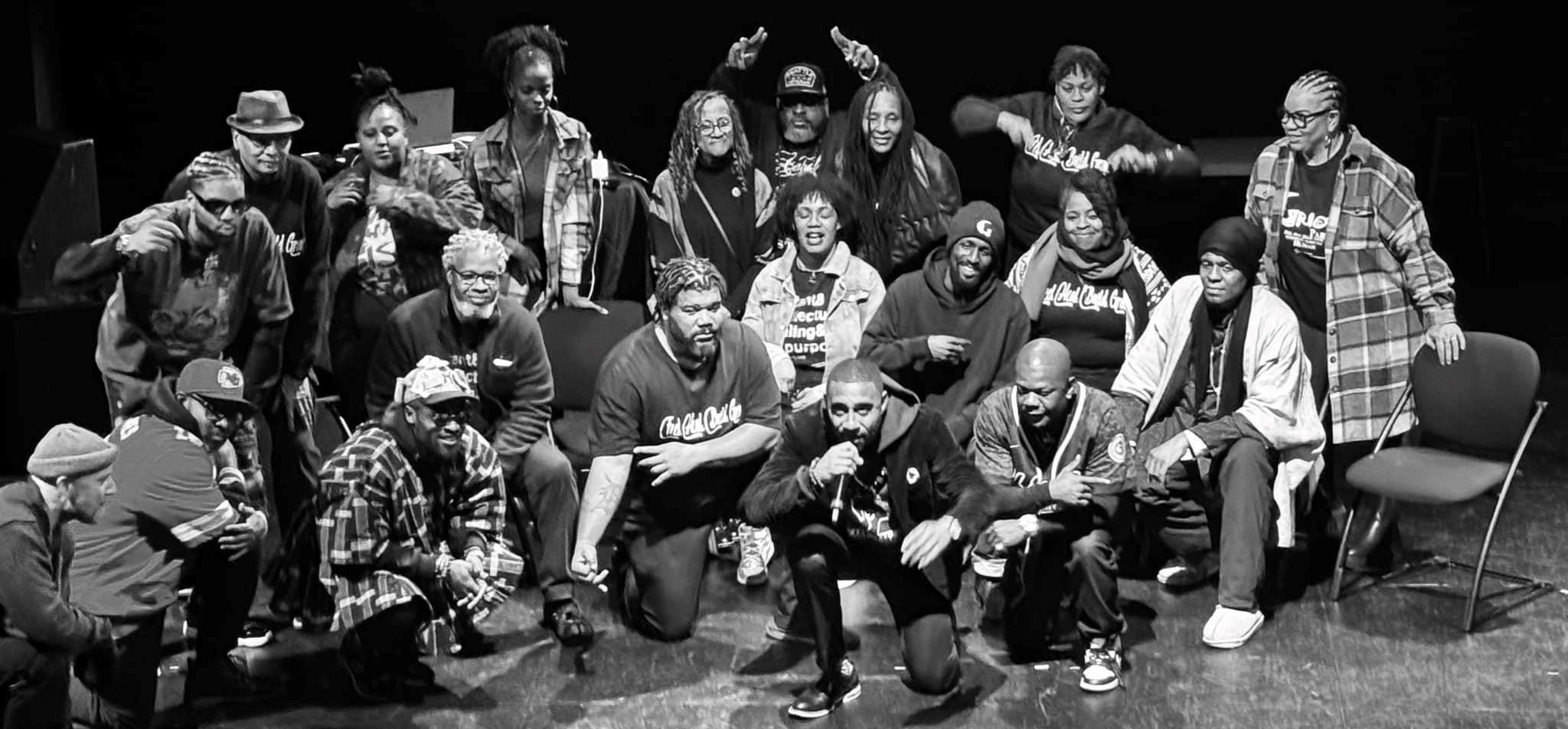 (From left to right: Gia Tran, Kayla Harstad, Sarah-Sense Wilson, Jah’lene Armes, Lenelle Jenkins, Jazell Jenkins, Mackenzie “Cat” Tetrick, Asia Gellein. Not pictured: Chayton Remle, Mark Peltier, Joseph Aleck)
(From left to right: Gia Tran, Kayla Harstad, Sarah-Sense Wilson, Jah’lene Armes, Lenelle Jenkins, Jazell Jenkins, Mackenzie “Cat” Tetrick, Asia Gellein. Not pictured: Chayton Remle, Mark Peltier, Joseph Aleck) In celebration of Native American Heritage Month, we are hosting a series of profiles and stories to amplify and honor people, businesses, organizations, stories, and projects connected to Seattle’s Indigenous community.
As part of our Native American Heritage Month series, we partnered with Urban Native Education Alliance (UNEA), a Native-led and Indigenous founded non-profit based in Seattle. UNEA focuses on providing culturally responsive and relevant support through direct social, cultural, and educational services to Native youth and families. For this project, UNEA youth leadership were commissioned to create and share art pieces and photographs in celebration of Native Heritage Month. Each piece centers around the theme of “Everyday Urban Indians.” The youth leaders involved in this project are: Joseph Aleck (Tiao-o-qui-ant), Asia Gellein (Cherokee), Kayla Harstad (Turtle Mt. Chippewa), Jazell Jenkins (Aleut Tribe), Lailani Norman (Blackfeet), Mackenzie “Cat” Tetrick (Descendant/Otoe-Missouria Tribe), Gia Tran.
Honoring Indigenous Warriors
Turbulence. Of the flight there. Of the crowds in the airport, on the National Mall, among the letters of history written on granite walls. Of past strife and accomplishments. Of the year 2020, and onto 2021, onto indefinite.
But turbulence is just the thrill of the story, the push of the wind. People talk about bumps and dips and falls felt in the seats of the plane cabin. What of the resiliency of the wings? Like in history, the thrill of the turbulent time—a battle won, a war fought—creates something evocative, but sacrifices the pieces that kept their place—the luggage that didn’t shift during flight, so to speak.
In the brisk of November 2021, a group of Indigenous youth leaders embarked from Washington to Washington—Seattle to D.C. The group consisted of nine youth, all in high school, and three chaperones. The trip was funded in conjunction by the non-profit organization, Urban Native Education Alliance (UNEA), and King County’s Best Start for Kids initiative.
Traveling to D.C. was an opportunity for these urban Indigenous youth to discover how American history was told from the nation’s capital. It was an opportunity to find the resiliency within the turbulence of Native history.
The trip took place during Veterans Day, giving the youth a chance to perform their practiced drumming and singing songs out of respect and honor of fallen Indigenous soldiers—warriors. And while honoring the past and ancestors, youth can look toward their own futures and chances to embrace their modern indigeneity.
America’s perception of Native/Indigenous peoples remains in the past. A colonized mind envisions an “American Indian” in a headdress, regalia, or other sacred garb. Although they are stunning pieces of sacred dress, it simplifies all Native identities, representations, voices, faces. This colonized picture of an Indian creates an anachronism—as if the past of Indigenous people remains their present and future.
The UNEA youth leadership are everyday Urban Natives. To them, being Indian, Native, or Indigenous does not mean wearing sacred clothing to perform their “nativeness” for non-Native people.
When several of the youth leaders were asked, “what makes you Indian?” each youth answered differently.
For Joseph (Tiao-o-qui-ant), what makes him Indian are “the ties to the community from tribal or solidarity work.”
For Kayla (Turtle Mt. Chippewa), what makes her Indian are her ancestors, representing herself, working on her values, and supporting her community.
“I’m not Indian. I’m Indigenous. My cultural background, my blood, and my spirit are what make me Indigenous,” says Cat (Descendant/Otoe-Missouria Tribe).
The picture accompanying this article is of the Native women who attend the D.C. trip—youth and chaperones. They are wearing ribbon skirts they made a couple weeks prior and holding handmade drums. They are standing outside of the National Museum of American Indian. The ribbon skirts and drums are part of their ceremony to honor Indigenous warriors on Veterans Day.
What this picture shows is more than the people and clothing in it. This picture shows tradition, new generations, ancestors, and urbanity coexisting.
This picture represents a community, a culture, and a people, still here and thriving from the resiliency of their ancestors, their warriors, despite the turbulence along the way.
This piece was commissioned by the Seattle Department of Neighborhoods. The opinions expressed and information contained herein do not necessarily reflect the policies, plans, beliefs, conclusions, or ideas of the City of Seattle.


